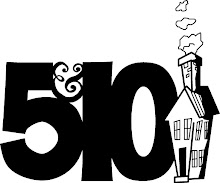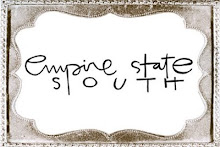





I learned about Gentry when reading about William Segal, the subject of a spring 2012 retrospective at the Georgia Museum of Art here in Athens. A native of Macon, Ga., Segal founded the textile industry magazine American Fabrics in 1946 and the men’s lifestyle magazine Gentry in 1951. He also founded the International Colour Authority in the 1960s, still today one of several benchmarks for color forecasting. Besides publisher, businessman, and arbiter of design, Segal was also an artist, and his paintings and prints will make up the 2012 GMOA exhibition (previously shown in the fall of 2009 at the Macon Museum of Arts and Sciences). I was talking to Hugh about Gentry, and he immediately bid on some back issues on ebay to share with his Empire State South designers, Susan Hable Smith of Hable Construction (who, incidentally, sits on the Interiors/Environmental Forecast Committee of the Color Association of the United States, which Segal acquired in the 1950s as part of his publishing empire) and Lisa Fiscus of Hawthorne House Interiors.
In the 1950s, and even today, there was no comparable publication, at least not in the U.S. Gentry was an artistic, yet commercial, magazine, printed on the finest stock; the quality of the text and photographs was exceptional. Advertisements were clustered at the front of the magazine so as not to interrupt the flow of the articles, which covered art (Rembrandt’s portraits), literature (the first printing in America of Hesse’s Siddhartha), genteel amusements (horse riding, dog breeding), food (cultural dining experiences), and high-end men’s fashion. Swatches of superior twills, poplins, and herringbone suiting were hand-pasted in the magazine alongside photographs or drawings of corresponding garments. I think this “hand-made” production first attracted Hugh, who is familiar with the rewards of artisanship. I think he was also drawn to the magazine’s potential cultural influence during its time. Segal, in an interview shortly before his death in 2000, said this about launching Gentry: “At that time in the U.S. . . . there was no culture. People did not know how to dress well, how to eat well, how to order wine or what to read.” Gentry folded in 1957, due to exorbitant production costs.
Related blog: http://theivyleaguelook.blogspot.com/search/label/1951
by Mary Koon







